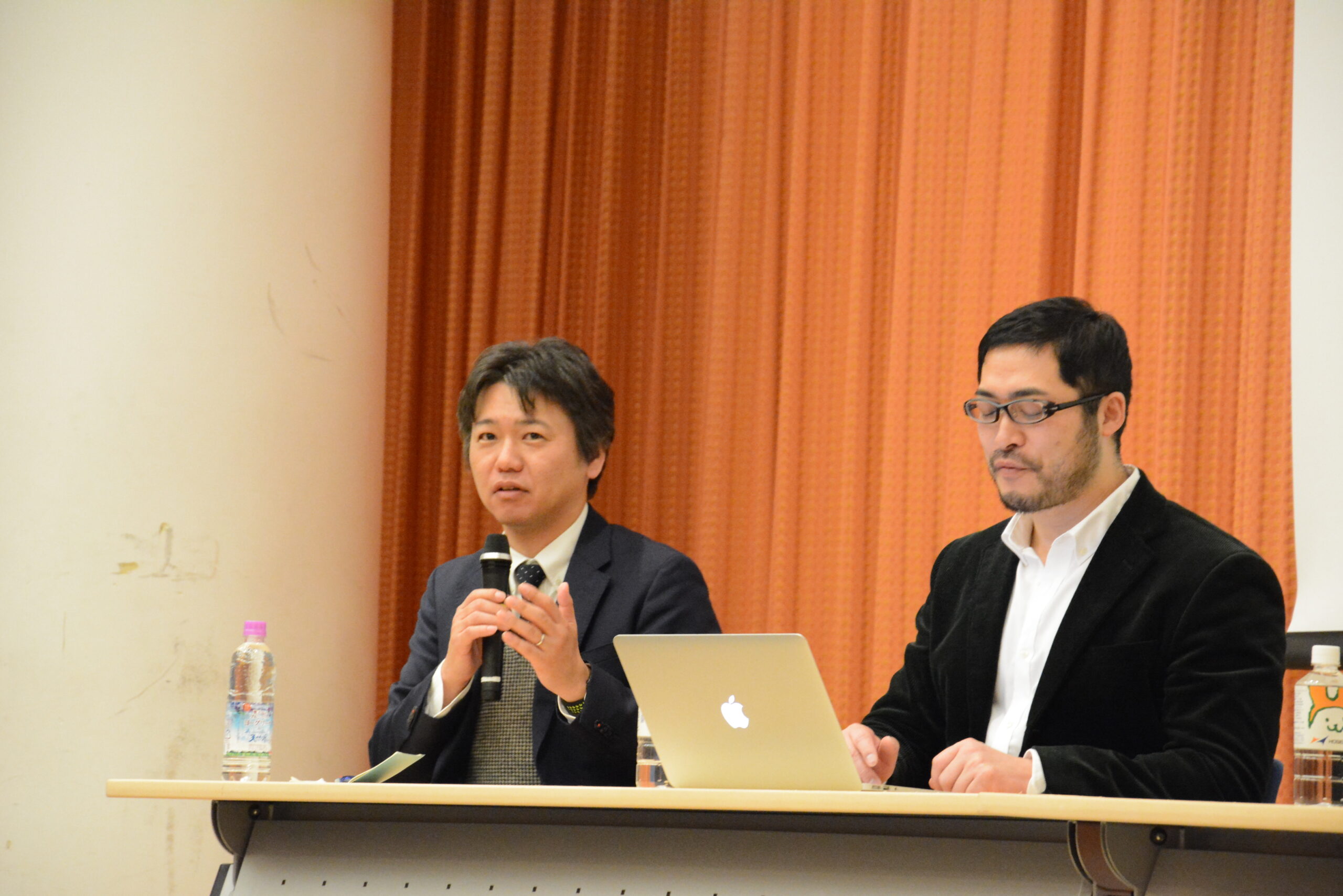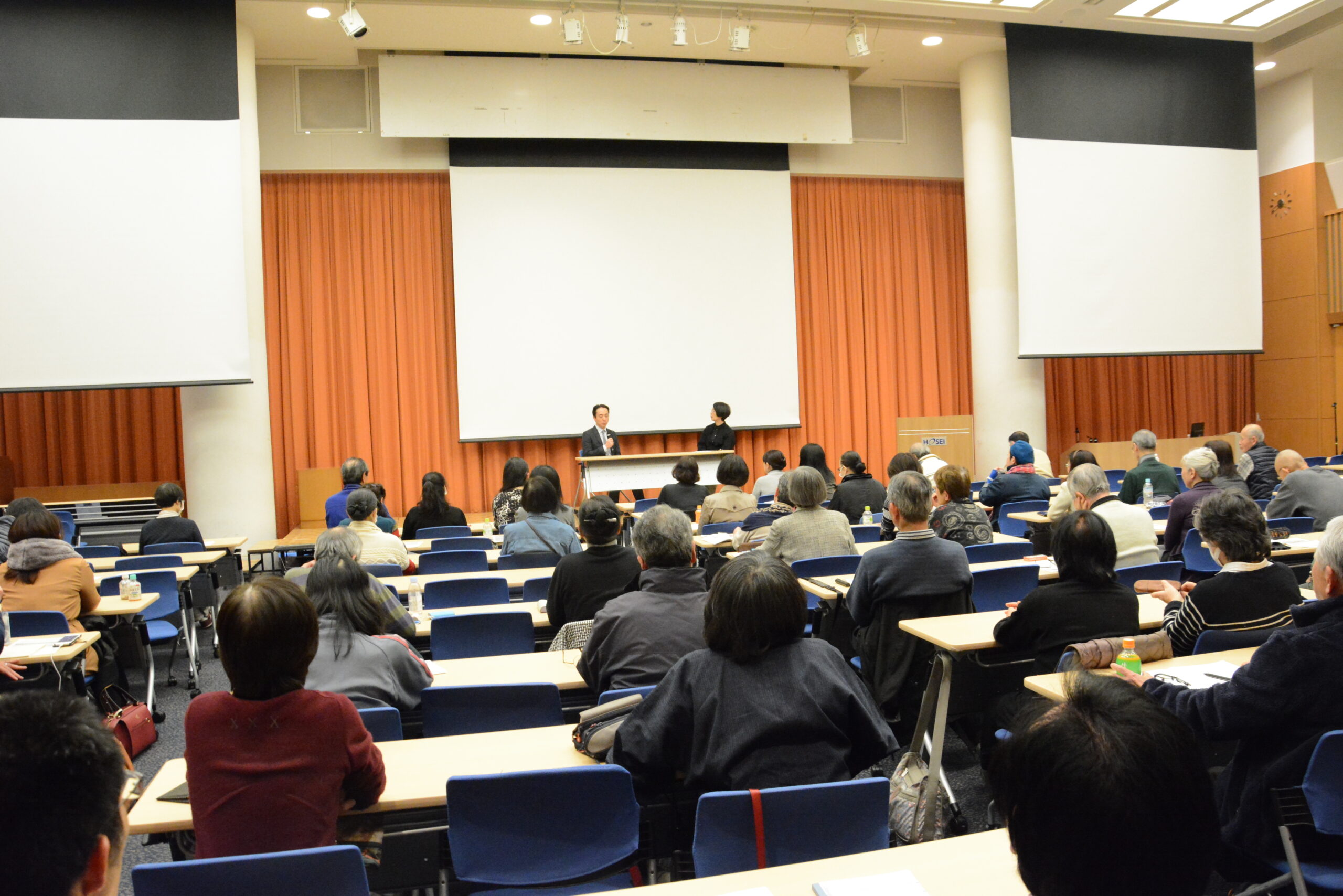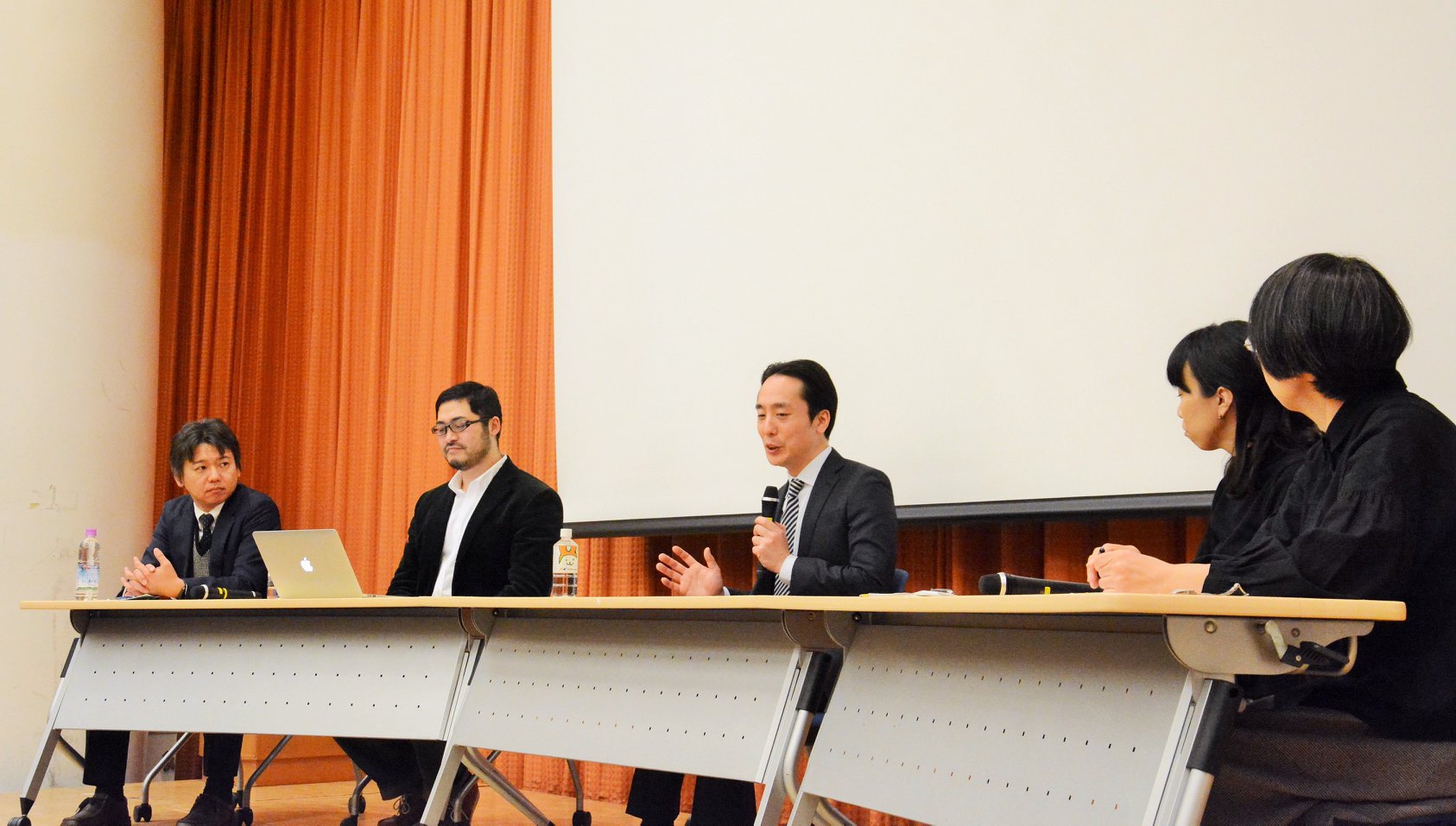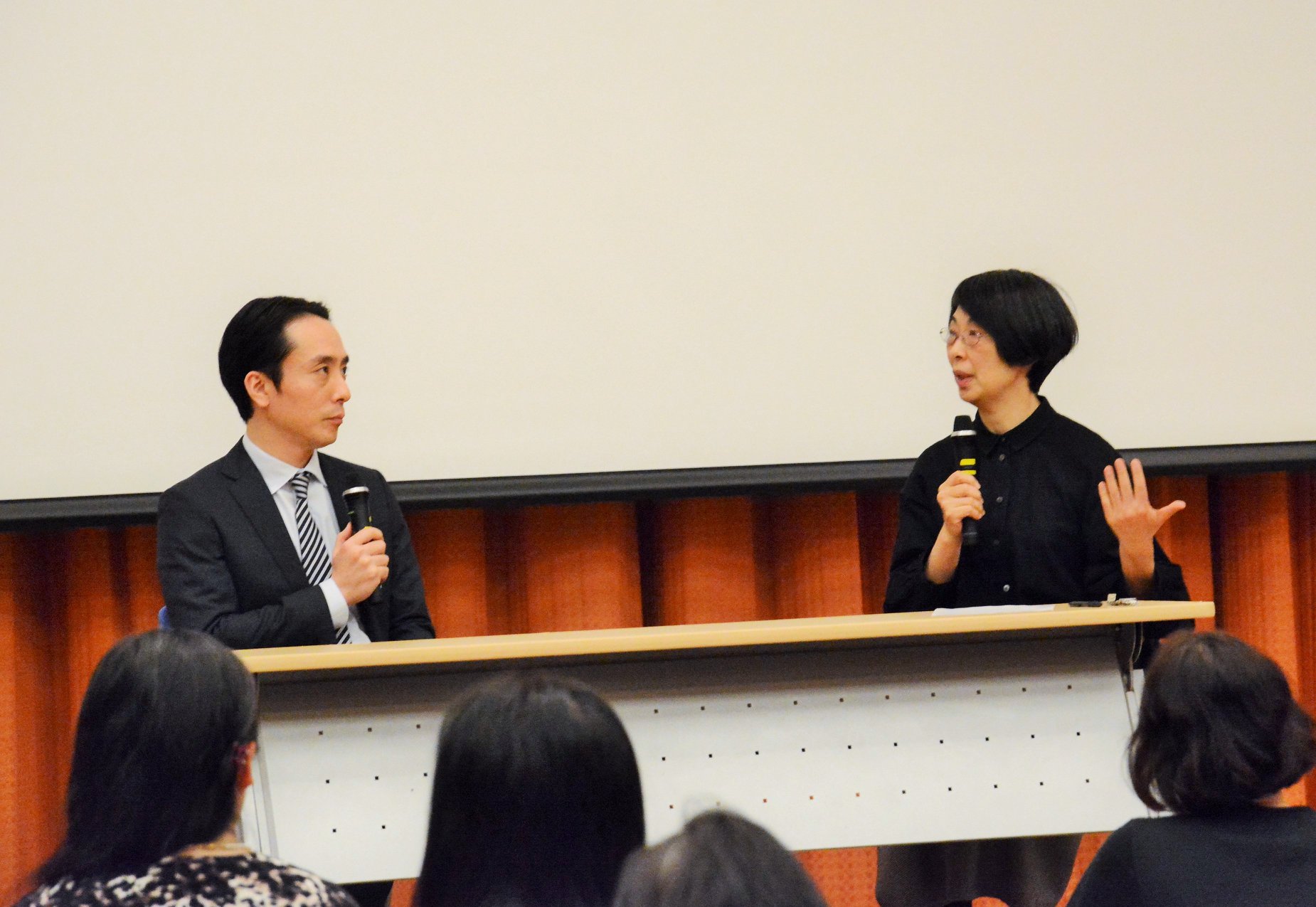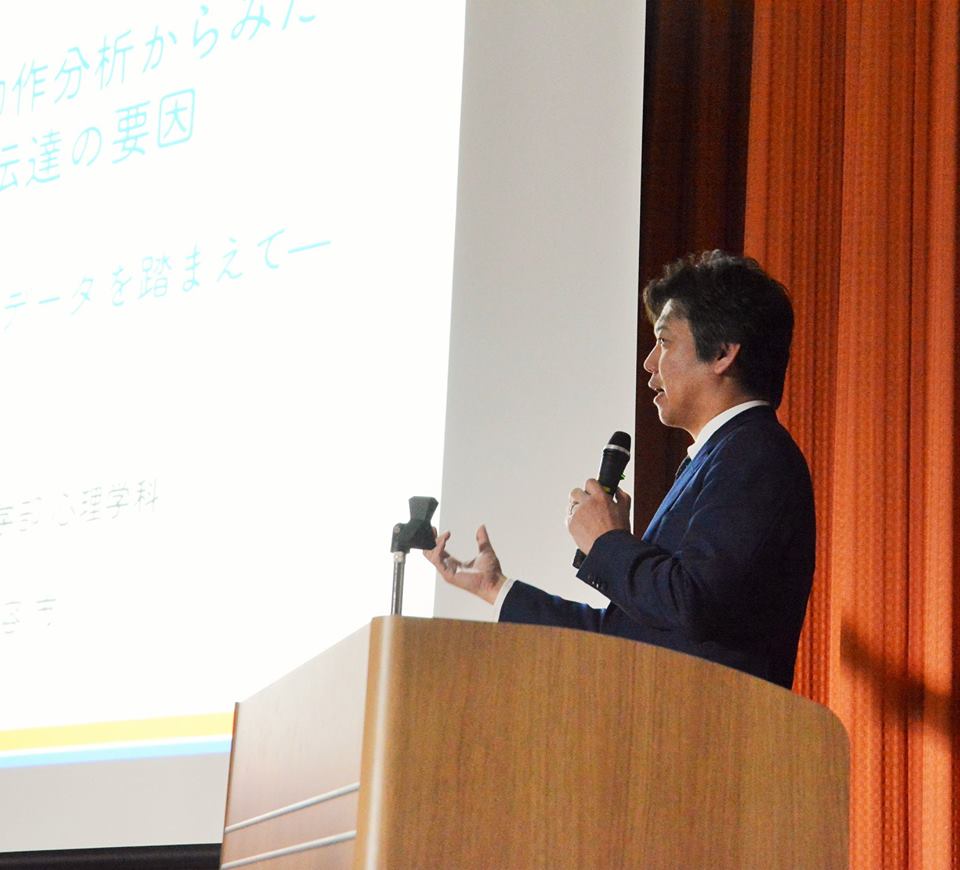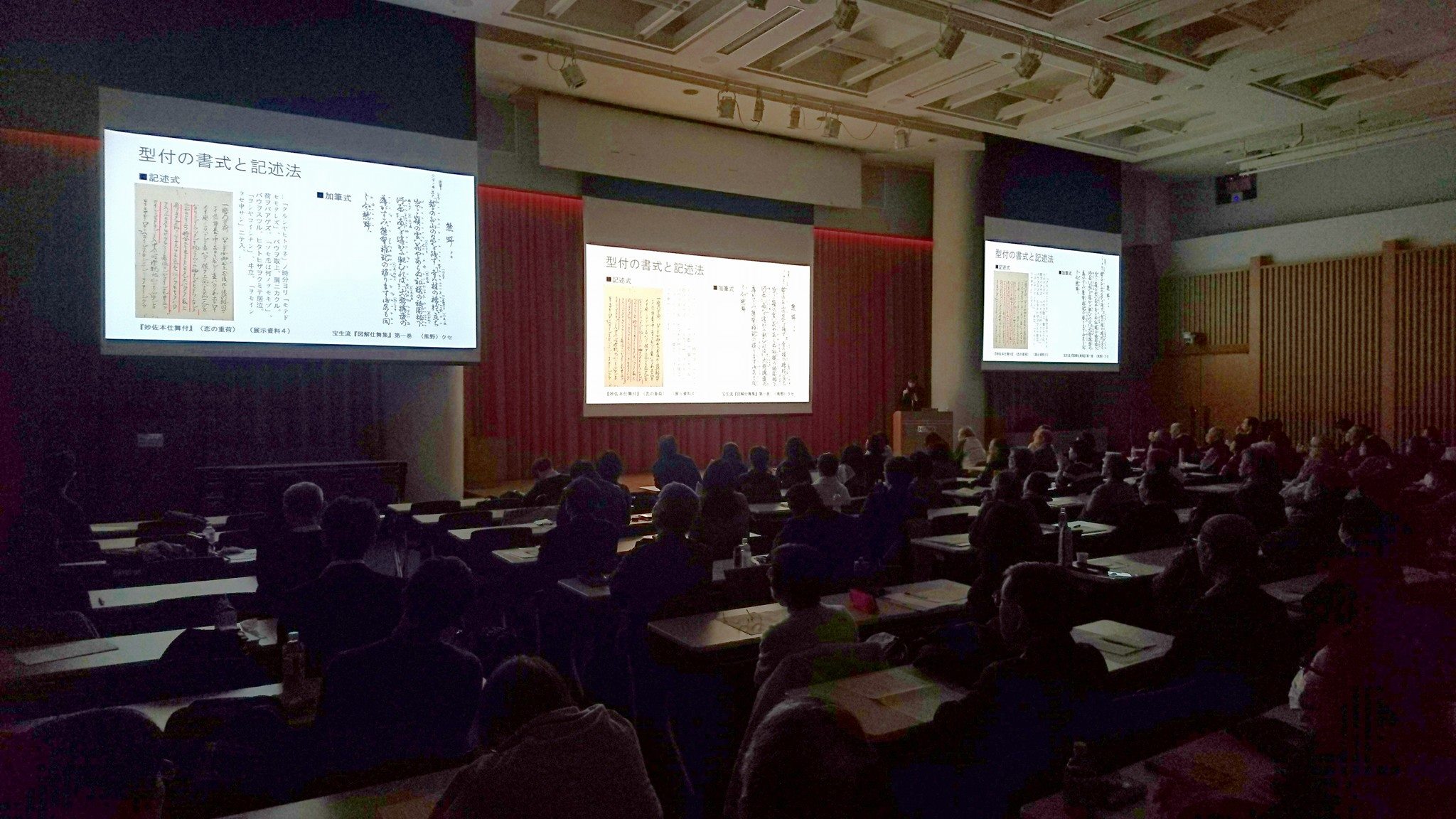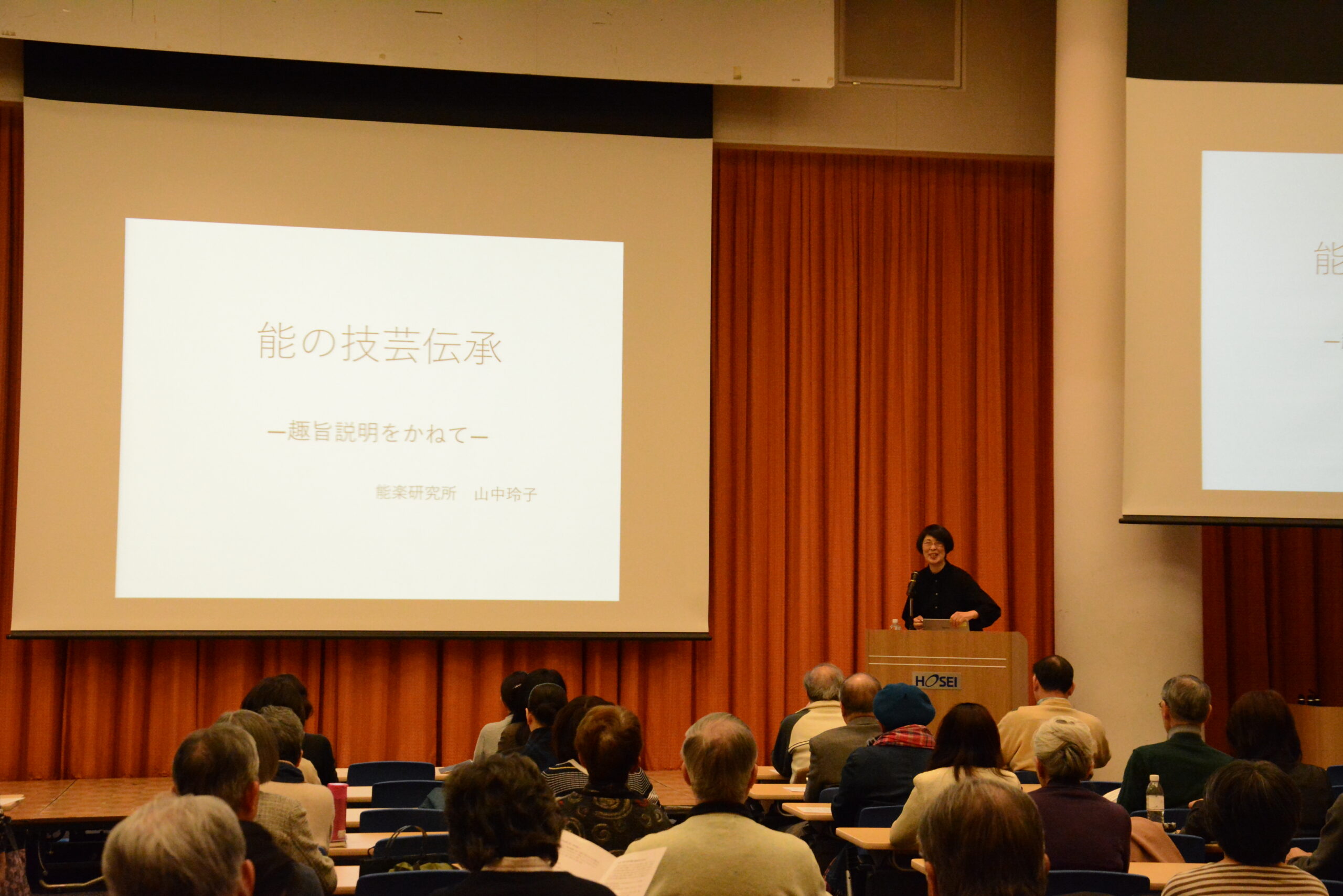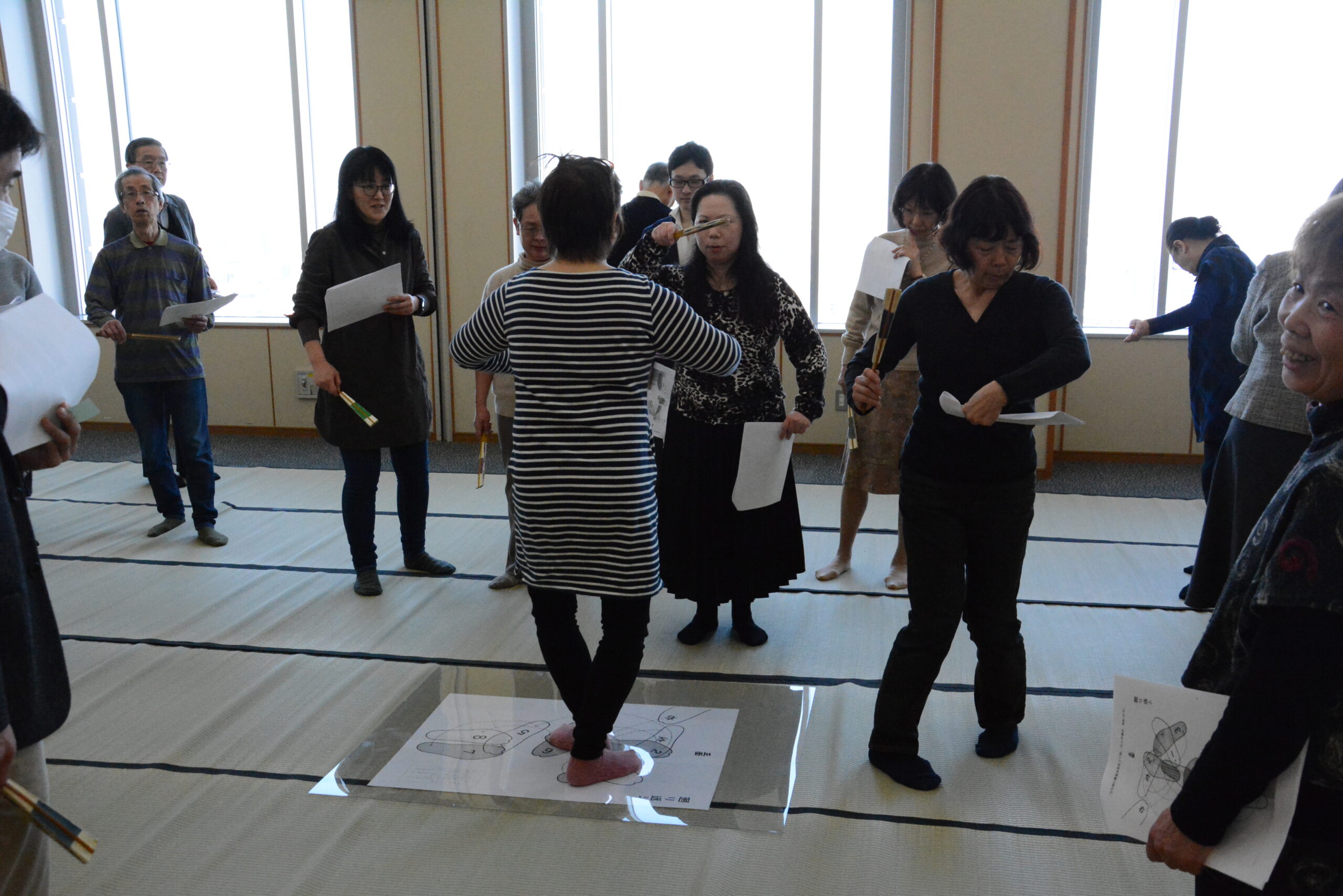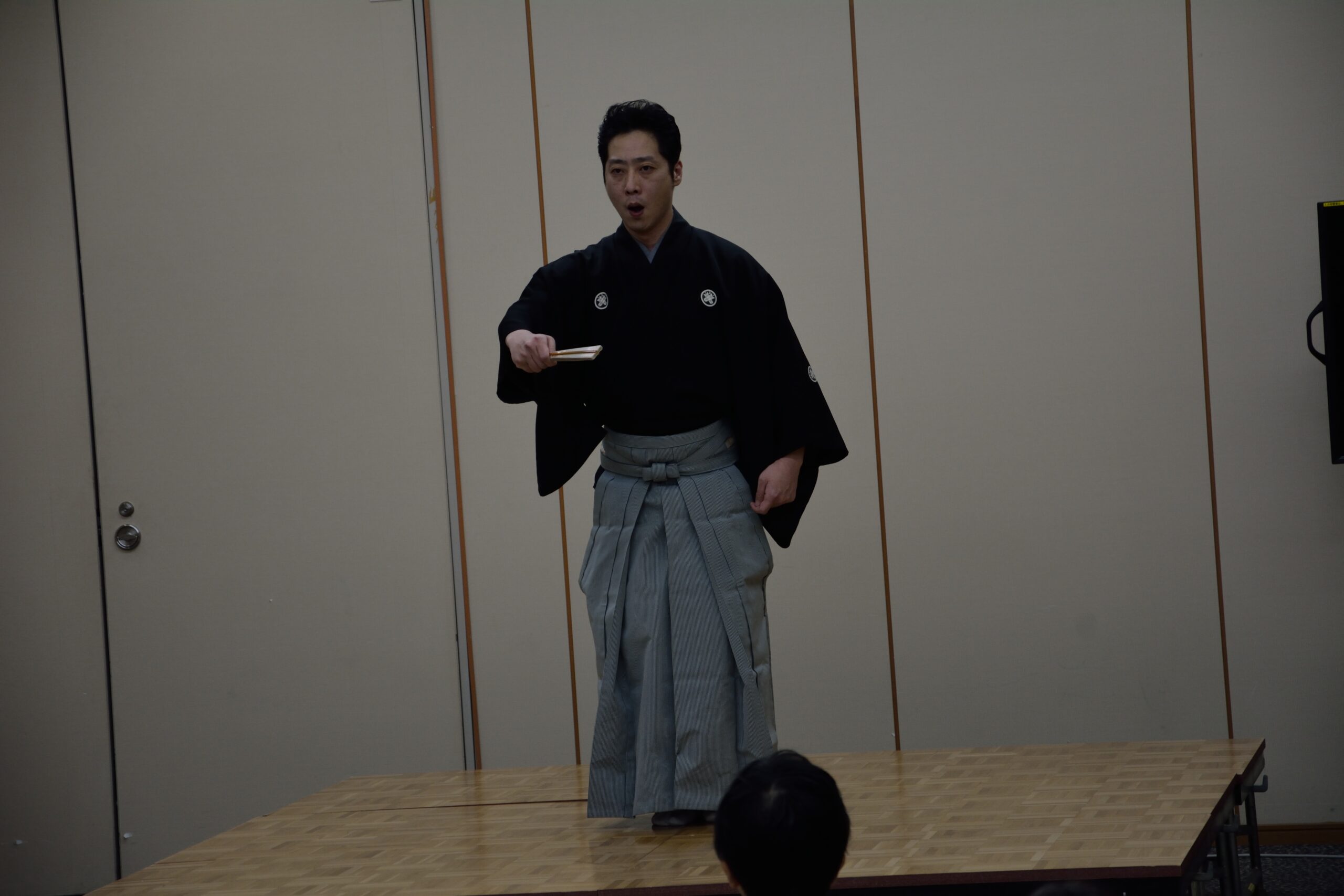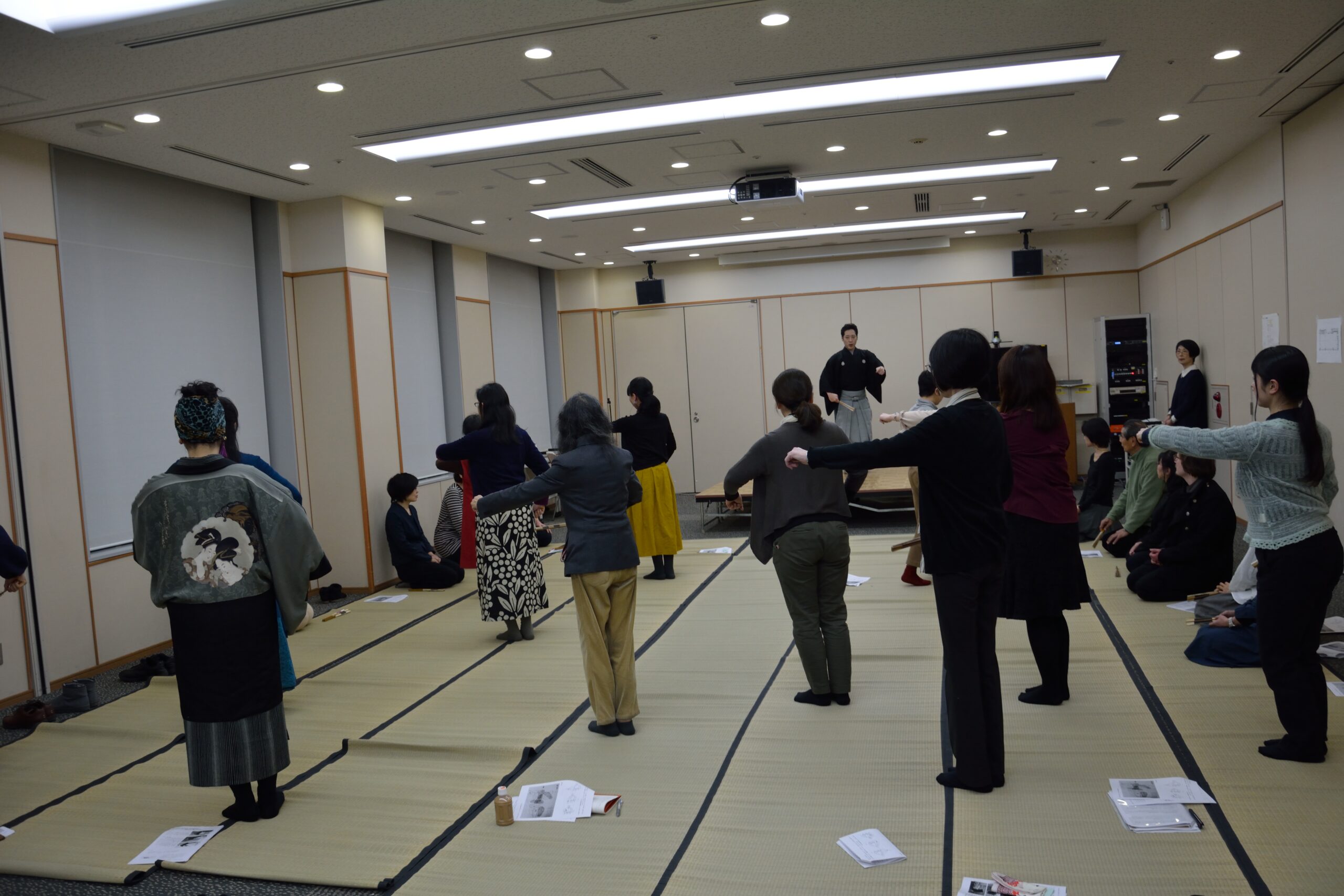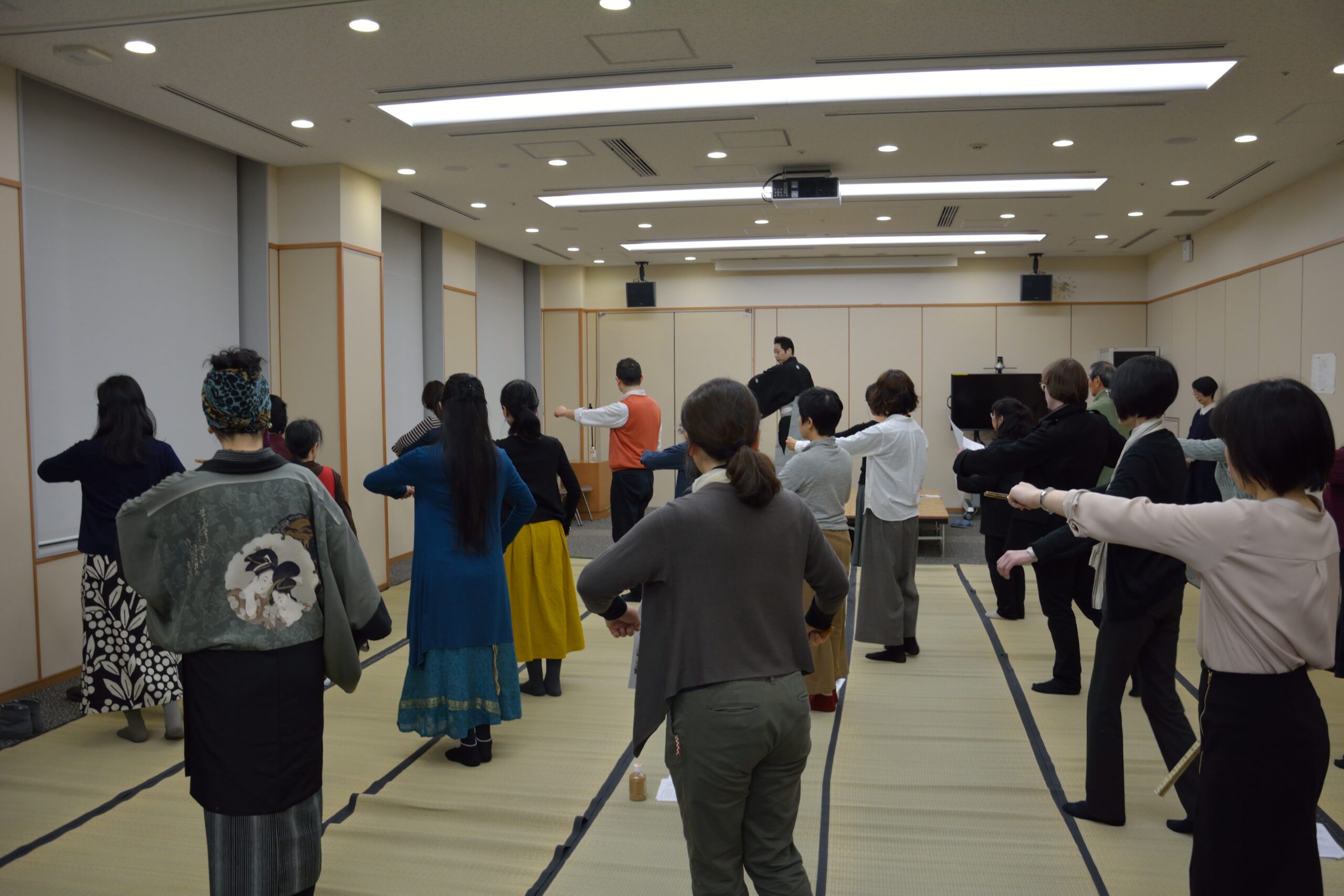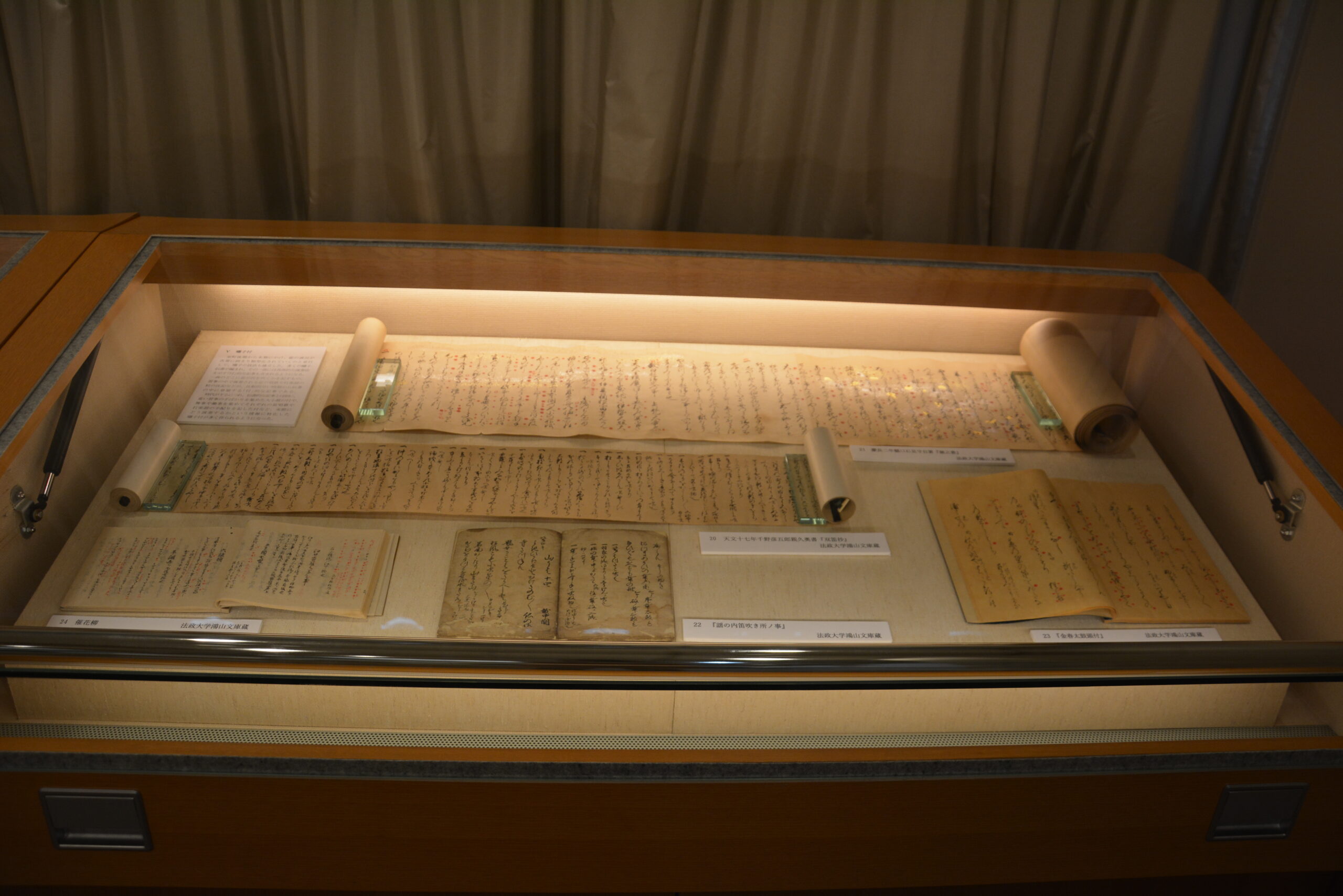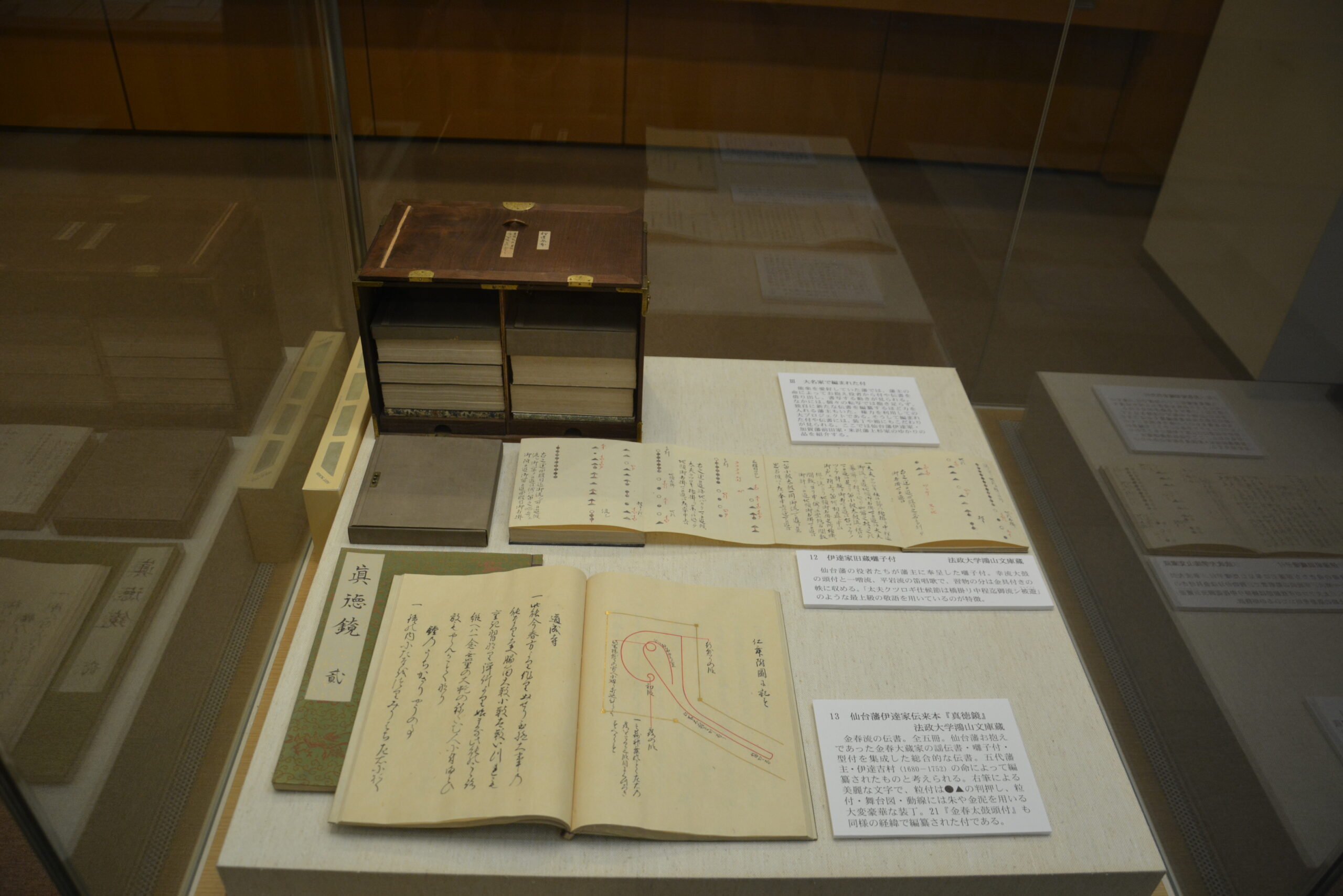20th Nō Theatre Seminar
Does the transmission of artistic techniques rely on unspoken communication, from mind to mind or body to body?
The 20th Nōgaku Seminar consisted of a symposium on March 12 and workshops on February 29 and March 12 on the question of whether dances can be performed solely on the basis of katatsuke dance notation. An exhibition on “The World of Nō Documents: Tracing the Transmission of Artistic Techniques” was held in the same period.
Exhibition The World of Nō Material for Performance
From February 20 through March 24
Venue: Hosei University, Boissonade Tower, 14F Exhibition Room
20th Nō Theatre Seminar Symposium:“How Are Artistic Techniques Transmitted, from Mind to Mind and Body to Body”
Monday, March 12 13:00~17:00
Venue: Hosei University, Boissonade Tower, 26F Sky Hall
YAMANAKA Reiko (Director, Noh Theatre Research Institute) presented a paper on the transmission of nō techniques, explaining how tsuke or notations for teaching or an aide-mémorie in textual, pictorial or musical form developed from personal memos to standardized rules. In the Edo period, these were edited by domain lords and later printed by the iemoto of nō schools as explanations for amateur performers.
FUKAZAWA Nozomi (Hosei University graduate school) discussed how shosa (movements) were recorded in Edo-period katatsuke notation, first with names for individual movements, then with a method of notation that could describe series of movements.
The next two presentations were based on a motion-captured video recording of a lesson given by the nō performer of the Kita school, Ōshima Teruhisa, in which he taught basic kata to eight beginners. Yokoyama Tarō (Atomi Women’s University) analyzed how artistic techniques were linguistically encoded and conveyed to each learner, arguing that a similar communicative process arose in master/disciple relations from the sixteenth century. After biomechanical analysis of the same data, Hayashi Yōichi (Hōsei
University) concluded that learners in the same nō lesson will differ in how fast they can learn to reproduce movements because individuals differ in their ability to sense their posture and position when their eyes are closed. This means that it is important for teacher and learners to share the same physical sense and the same mental image of movements.
ŌSHIMA Teruhisa’s “Lessons to professionals and lessons to amateurs” was in the form of an interview with Yamanaka Reiko. Describing the lessons he had received from his childhood to the present, he commented on how amateurs are taught.
TAKAHASHI Norimasa of the Hōshō school and NAKAMURA Masahiro of the Komparu school were among those who joined the lively general discussion that followed. There was a total of about 150 participants.
Nō Workshop
Day1 February 28 (19:00~19:45) Day2 March 12 (11:30~12:15)
Lecturer TAKAHASHI Norimasa
TAKAHASHI Norimasa was invited to run the workshop on whether dances can be performed solely on the basis of katatsuke dance notation. The aim was to experience how the understanding of kata differs depending on how it taught. Participants first attempted to reproduce dance movements with reference to katatsuke dance notation alone. Next, after watching the performer explain and demonstrate these movements, the participants would try to reproduce the same movements. A total of 57 persons participated in the two-day workshop.
- Flyer
- Symposium
- Symposium
- Symposium
- Symposium
- Symposium
- Symposium
- Symposium
- Noh Workshop
- Noh Workshop
- Noh Workshop
- Noh Workshop
- Noh Workshop
- Noh Workshop
- Exhibition
- Exhibition
- Exhibition
- Exhibition
- Exhibition
- Exhibition

